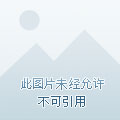IT House April 13 news, according to the National Broadcasting Corporation, in 1969, the first human manned lunar mission Apollo 11 collected lunar dust samples, will be auctioned in New York City on Wednesday.

According to Bonhams, the auction house responsible for the auction, the auction includes five lunar dust samples and could be worth as much as $1.2 million (about 7.644 million yuan). IT House understands that the sale of these dust samples has undergone some controversy and will become the only known lunar dust samples that have been legally sold after NASA certification.
▲ A sample of lunar dust collected by Armstrong during the Apollo 11 mission in 1969
"No one has ever offered a validated sample of the Apollo Moon at auction, so we are very happy and honored to be in charge of this auction," said Adam Stackhouse, a Bonhams expert who oversees the sale.
As can be seen from the image, the auctioned lunar dust samples were placed on five aluminum plates, the outside of which was loaded by a blue plastic container. On top of each sample is a small piece of carbon-conductive tape used to recover lunar dust from the collection bag.
On July 21, 1969, Armstrong became the first human to set foot on the moon, collecting a small "contingency sample" of lunar dust before performing other lunar missions. NASA said that if the mission needs to be shortened for any reason, Armstrong and Aldrin will be able to return to Earth with emergency samples.
After the Apollo 11 mission, the sample was lent to a space museum in Kansas. In 2005, Max Ary, then known as the director of the Kansas Space and Space Center, was convicted of stealing and selling artifacts belonging to museums and NASSA, and the sample was subsequently confiscated by the U.S. Marshals Service.
In 2015, the U.S. Marshals Service sold the sample at an auction, and Nancy Lee Carlson, an Illinois lawyer and geologist, bought it and several other space artifacts for $995 (about 6,338.15 yuan).
That same year, Carlson sent the sample to NASA to verify its origin. NASA confirmed that the sample was genuine, but claimed it belonged to the government and refused to return it.